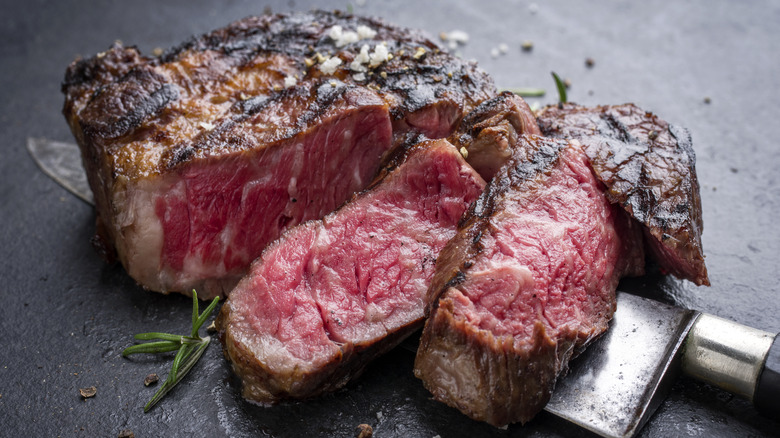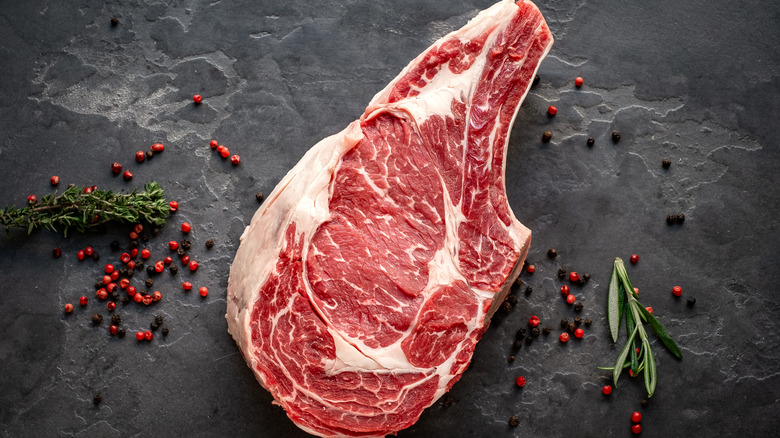Delmonico Steak Didn't Always Mean What It Does Today
If you walk up to a fine butcher counter and order a Delmonico steak, chances are you'll be sold a thick and juicy ribeye. Named for the historic restaurant in New York City, the Delmonico steak epitomizes luxury. But in the many decades since the founding of the original Delmonico restaurant, the original cut served as the eponymous special has been redefined, and the definition of the steak at meat counters around the country has likewise drifted.
Founded in 1837, Delmonico's was the first fine-dining restaurant in America. Public dining until that day was limited to food served in taverns or the meals provided to travelers staying at an inn. Delmonico's defined elegance from the day it opened, with some of the most notable chefs of the day running the kitchens, including Charles Ranhofer. Ranhofer presided at Delmonico's stoves from 1862 until 1898 and published his numerous recipes in a weighty book (literally — it's more than 7 pounds, and 4 inches thick!), including an entry for "Delmonico Sirloin Steak," calling for two pounds of sirloin pounded and trimmed. There's no mention of ribeye here, but this is still quite an indulgent serving of beef.
The original Delmonico family ended the restaurant in the early 1920s, but the name has been resurrected by several ownership groups, including the current partners who opened the space in 2023 after $4 million on renovations. After the passage of so many years, it's only natural that the exact cut of beef presented might change with the times.
Delmonico defines decadence, no matter what cut of meat is served
In many markets, the term Delmonico steak has been linked to the best quality thick-cut steak available, which might vary from sirloin to strip to ribeye, depending on the taste of the chef and client. It's possible that even back in the early days of the restaurant this was the case, but it's impossible to know because the only documented versions of the steak are in Charles Ranhofer's recipe collection "The Epicurean" and his predecessor Alessandro Filippini's recipes entitled "The Table," published in 1889. Both books only list sirloin for the Delmonico steak preparation.
Today, the signature Delmonico steak on the New York restaurant's menu is an 18-ounce aged ribeye steak provided by a specialty meat packer in California. Other restaurant chains that have adopted the Delmonico name also boast huge ribeye steaks as their house "Delmonico. These are all a nod to the original decadent reputation of the famous Delmonico steak at the elegant, historic, first restaurant in America.

